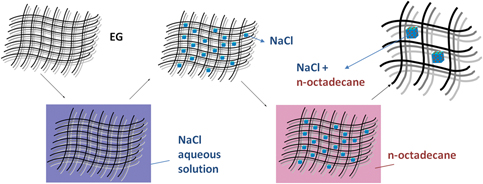Crossref Citations
This article has been cited by the following publications. This list is generated based on data provided by
Crossref.
Fan, Xiaoyue
Qiu, Xiaolin
Lu, Lixin
and
Zhou, Binglin
2020.
Fabrication and characteristics of solar-driven phase change microcapsules with crystalline TiO2/CuS hybrid shell for solar energy conversion and storage.
Journal of Materials Research,
Vol. 35,
Issue. 16,
p.
2126.
Zong, Zhifang
Chen, Depeng
Zhao, Chunxiao
Tang, Gang
Ji, Yilong
Zhang, Hao
and
Lv, Zhong
2021.
Application of Ce–Eu/TiO2 phase change material as the wall material to improve the indoor environment.
Journal of Materials Research,
Vol. 36,
Issue. 3,
p.
615.
Fan, Xiaoyue
Qiu, Xiaolin
Lu, Lixin
and
Zhou, Binglin
2021.
Full-spectrum light-driven phase change microcapsules modified by CuS-GO nanoconverter for enhancing solar energy conversion and storage capability.
Solar Energy Materials and Solar Cells,
Vol. 223,
Issue. ,
p.
110937.
Muchtar, Ahmad Rifqi
Hassam, Christopher L.
Srinivasan, Bhuvanesh
Berthebaud, David
Mori, Takao
Soelami, Nugroho
and
Yuliarto, Brian
2022.
Shape-stabilized phase change materials: Performance of simple physical blending synthesis and the potential of coconut based materials.
Journal of Energy Storage,
Vol. 52,
Issue. ,
p.
104974.
Liu, Yue
Luan, Jingde
Yan, Zheng
and
Ke, Xin
2022.
Green preparation and thermal properties of shape-stabilized paraffin/CS/SiO2 composite for phase change energy storage.
Colloid and Polymer Science,
Vol. 300,
Issue. 7,
p.
801.
MERT, Mehmet Selçuk
MERT, Hatice Hande
YALDIZ, Sude
and
YÜKSEL, Fikret
2023.
Oleik asit/nişasta/grafit temelli kompozit faz değiştiren malzemelerin hazırlanması ve ısıl özelliklerinin incelenmesi.
Journal of Innovative Engineering and Natural Science,
p.
53.
Song, Lingjun
Yang, Yukai
Hu, Haopan
Wang, Yitong
Jia, Xinlei
Sun, Lixian
Xu, Fen
Li, Bin
Yu, Ting
Zhang, Huanzhi
Zeng, Julan
and
Cao, Zhong
2024.
Thermodynamic study on expanded graphite-based multifunctional composite phase change materials for personal thermal management and medical protection.
Journal of Thermal Analysis and Calorimetry,
Vol. 149,
Issue. 2,
p.
595.
